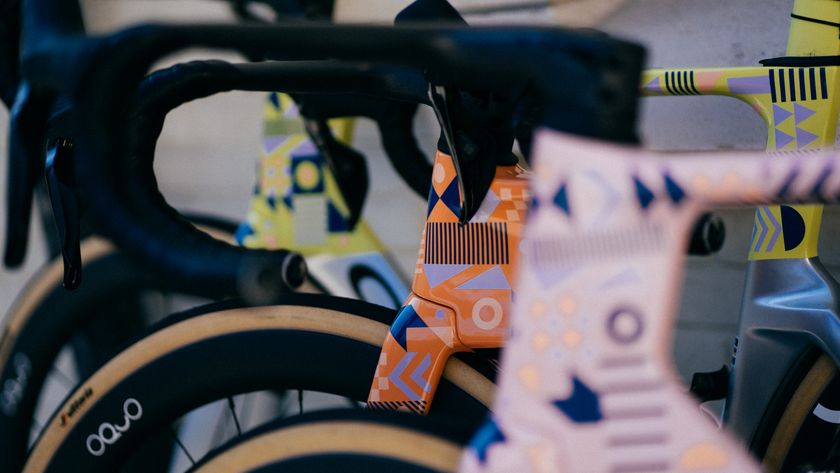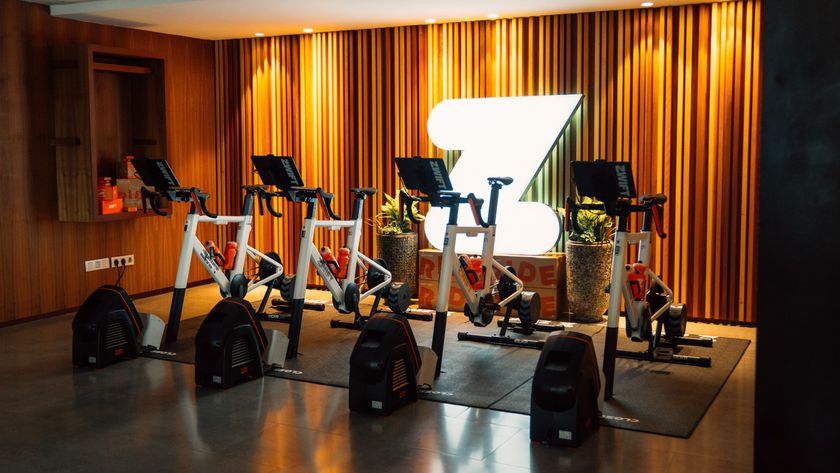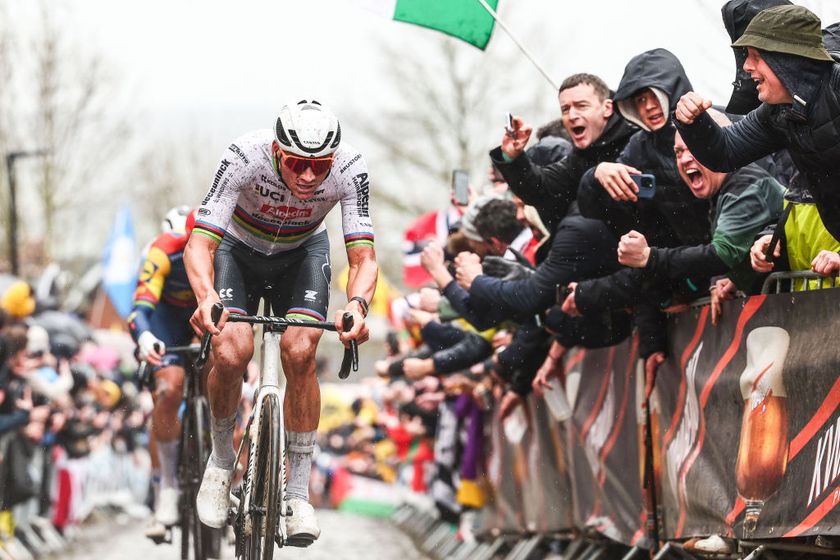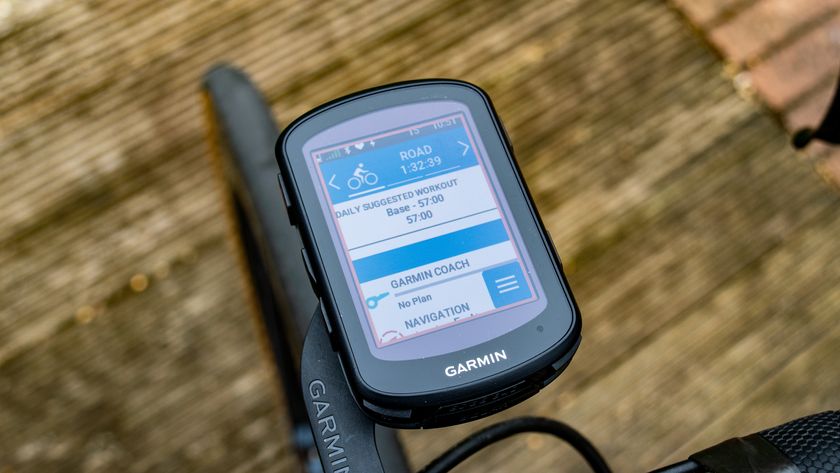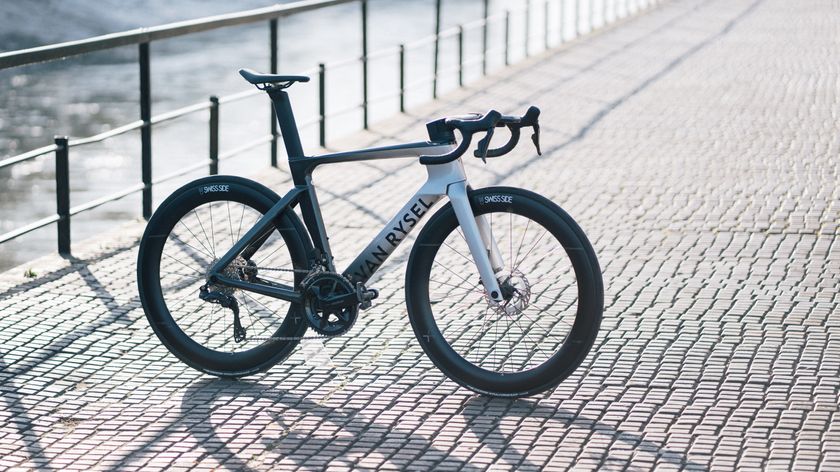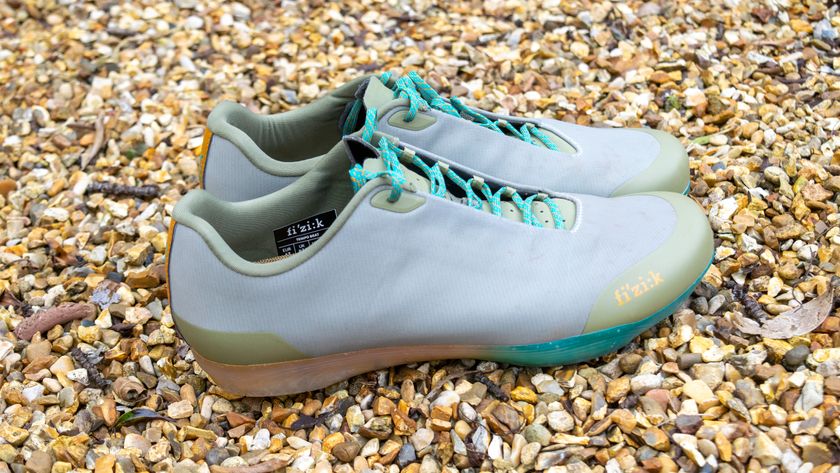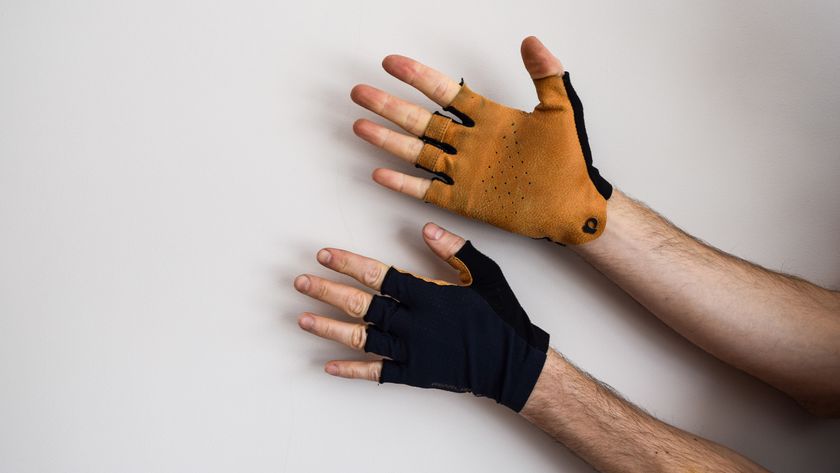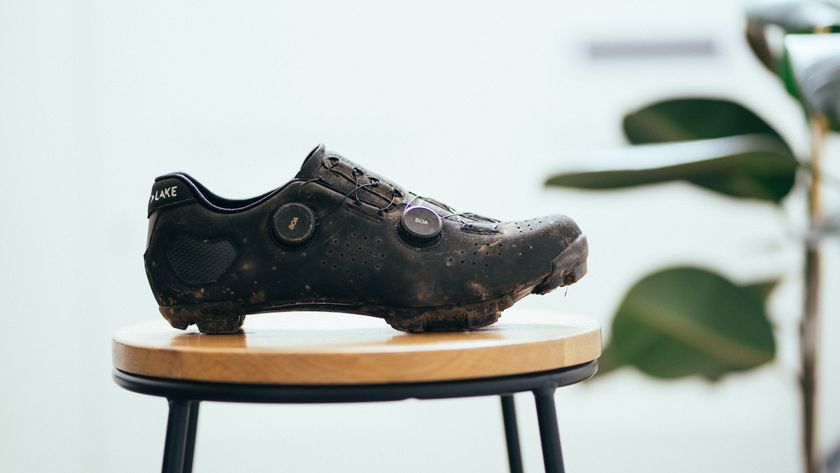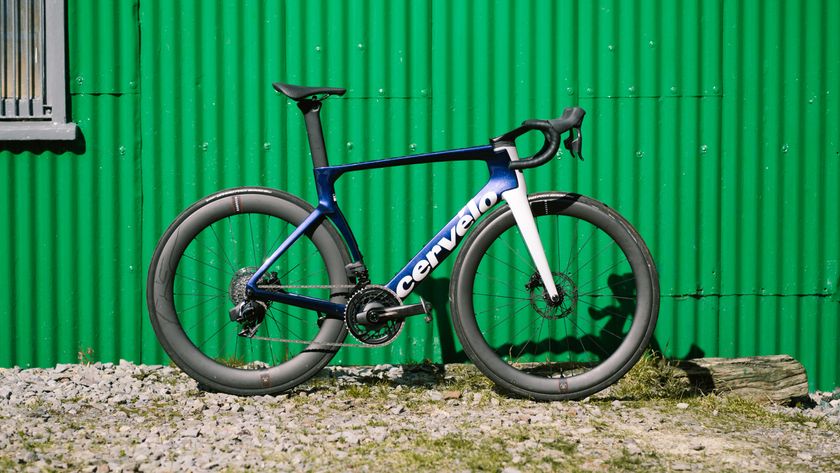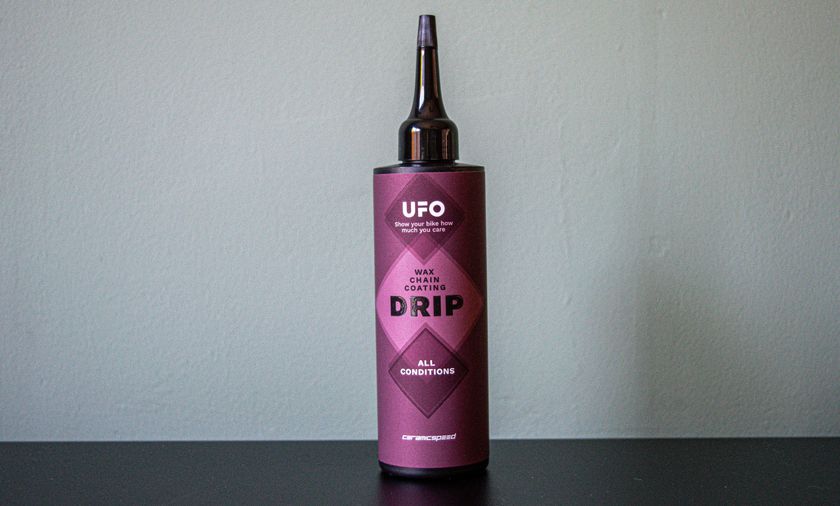You can trust Cyclingnews


























This article originally published on BikeRadar
"Slow is smooth, smooth is fast…" It's a cheesy quote from a Mark Wahlberg movie (or a Phil Dunphy classic if you're a Modern Family fan) but it's one that suits the Cannondale SuperX Hi-Mod Disc perfectly.
Its powerful and highly controllable disc brakes let us enter the corners hotter and more consistently, its incredibly silky ride quality is easier on the body, so you can stay on the gas longer and feel less beat up at the end of the hour, and it's impressively efficient and enviably lightweight. Simply put, it's one of the fastest and most capable 'cross racers we've tested.
Ride & handling: A silent killer
By far the Cannondale SuperX Hi-Mod Disc's defining characteristic is its smoothness. It's a positively creamy ride on rough courses that might rattle your hands numb aboard a less forgiving machine, especially when you run the tires at suitably low pressures. While it's arguable whether that comfort even matters for a race lasting only an hour, it's undeniable that the SuperX Hi-Mod Disc's cushy demeanor also lets you stay on the gas more consistently and simply go faster than racers that might be forced to stand up and coast.
According to Cannondale, our disc-specific SuperX tester is actually even softer in terms of ride quality than the rim brake-equipped version we sampled two years ago.
The SuperX Hi-Mod Disc's fantastic ability to soak up the bumps pays dividends in tricky corners, too. In addition to cushioning your body up top, the soft frame helps keep the tires' contact patches more firmly affixed to the ground. Instead of skittering through a turn, the Cannondale's more planted personality helps you hold your desired line – which, again, helps you go faster.
That awesome ride out back doesn't translate quite as fully up front, however – something we've noted on some road bikes with similarly silky ride characteristics. That said, the stock tapered SuperX Hi-Mod Disc fork is admirably comfortable overall, especially compared to other forks with larger lower steerer diameters and enormously oversized crowns and legs.
More importantly, that stout fork is connected to an awesomely stiff front triangle for fantastically precise handling that seems especially suited to American-style courses.
Together with the smart frame geometry – including a relatively low 67mm bottom bracket drop, 71.5-degree head tube angle, and reasonably tidy 430mm chain stays on our 52cm tester – the result is excellent agility through tight and slow 180-degree hairpins. We also experienced quick transitions from edge to edge when linking corners together, and the ability to confidently drift the whole bike through slippery, high-speed sweepers.
The comfort-tuned rear end doesn't seem as tremendously stiff as the front triangle. Nevertheless, the SuperX Hi-Mod Disc is efficient when you apply the power, surging forward with each mad stab at the pedals but in a curiously 'quiet' way – almost as if the flattened chain stays are damping vibrations but rounding the peaks of your power output, too.
Make no mistake – this bike will certainly go when asked, and there's lots of pop. But the feedback in this department isn't as visceral as from bikes that are more unyieldingly rigid.
Cyclo-cross-specific features abound on the SuperX Hi-Mod Disc, and it's clear that Cannondale has done its homework. Mud clearance is excellent all round, the slightly sloping top tube leaves an open triangle for easier run-ups, and while the top tube itself isn't flattened underneath, its huge diameter is surprisingly comfortable to rest on your bony shoulder.
Frame: Design cues from proven Flash and SuperSix platforms
Save for the 'cross-specific geometry, nearly all the critical design features of the carbon fiber SuperX Hi-Mod Disc are adopted from Cannondale's highly successful Flash carbon mountain bike hardtail and SuperSix EVO Hi-Mod road racing platforms.
The slim seat tube is flattened and flared down at the BB30 bottom bracket shell, but the front triangle features minimal shaping with a huge and nominally cylindrical top tube and down tube both mated to a tidy 1 1/8in to 1 1/4in head tube.
It's a wholly different story out back, though, with both the seat stays and chain stays featuring prominently flattened sections that provide the bike's noticeable cush. Cleanly mounted at either end are post-mount disc brake tabs sized for 140mm rotors, but 160mm ones will also fit with the appropriate adapters.
Though impressively stiff with a fantastically refined ride quality, the frame is still remarkably light at 1.04kg (2.29lb) for our 52cm sample (actual weight, with seatpost collar, rear derailleur hanger, and water bottle bolts). The matching fork adds just 410g (200mm steerer, no plug).
Cannondale contends that the frame and fork are still more than durable enough for the rough-and-tumble sport of cyclo-cross, with its BallisTec composite construction that incorporates high-impact resins to prevent damage during a crash.
According to Cannondale, stiffer – but more brittle – fibers are reserved solely for areas where they're most needed and protected. That said, we'll have to take the brand's word on this one, as we managed to stay upright throughout the test period.
Cable routing is wholly external, with the derailleur lines running along the bottom of the down tube and the hydraulic-ready, full-length rear brake housing zip-tied to guides on the top tube. Some potential buyers will undoubtedly view this as a downgrade from the internal setups that have become increasingly popular in the past few years. In fairness, though, the Hi-Mod Disc's simple layout is much easier to maintain when needed.
The bike's aesthetics are far more polarizing, with its in-your-face black and neon green paint scheme – not to mention the full accoutrement of matching components. If it's not for you, that's too bad, as it's the only option available.
Equipment: Excellent setup for the privateer racer
Not surprisingly, Cannondale's flagship 'cross bike comes with a mix of high-end components. These include SRAM's latest Red transmission, FSA's excellent SL-K BB30 carbon fiber cranks with 'cross-specific 46/36T chainrings, Stan's NoTubes ZTR Alpha 340 Disc tubeless-compatible wheels wrapped in Schwalbe Racing Ralph clinchers, Avid BB7 mechanical disc brakes, a Fizik Tundra 2 saddle, and finishing kit from Cannondale's in-house stockpile.
We've already written at length about the current-generation SRAM Red group, so we won't rehash the details except to point out that its distinctly raw, positive, consistent, and highly tactile operation make it a prime choice for cyclo-cross. There's never any question of whether you actually pushed the lever, and the excellent ergonomics and plus-sized shifter paddle are always easy to find in the heat of battle – even if the battlefield is muddy.
Avid's BB7 single-piston mechanical disc brakes work well, too, despite the fact that they were originally designed before SRAM even had a road group on the market. While we would strongly advocate switching to compressionless housing on the rear brake – for better lever feel – overall power and modulation are excellent, especially in inclement conditions, where a rim brake is generally more hit-or-miss, or when pulling the levers from the hoods.
Some might find the BB7 grabbier than a properly adjusted rim brake and, in fairness, there is some truth to that. However, it doesn't take long for your fingers to adjust, and we'd rather have the power and control on hand. Avid's long-running mechanical discs do require very careful setup for optimal performance, though – the pads don't self-adjust for wear, and pad clearance is disappointingly minimal.
We're quite pleased with the Stan's NoTubes wheels, as they're reasonably lightweight and stiff, easily set up to tubeless, and have stayed true during testing. Racers seeking ultimate performance will still want to swap in a set of tubulars, but for privateers and amateurs who don't want to bother with glue or multiple sets of wheels and tires (or multiple bikes, for that matter) these are a good way to go.
Likewise, the versatile Schwalbe Racing Ralph tires are fantastic on dry grass, pavement, sand, and hardpack, with an aggressive casing profile and shoulder tread that really bites into the ground when you lay it over. The tightly spaced knobs pack up instantly in mud, though, and we wish the bead fit more tightly for more confident tubeless running (we were only comfortable running about 27psi up front).
Our only slight disappointment came with the house-brand aluminum seatpost, compact-bend aluminum handlebar, and forged aluminum stem. It all works just fine but we'd prefer to see higher-end, name-brand gear on a flagship rig costing US$6,100 (£3,699.99). Regardless, total weight was still an impressive 7.62kg (16.80lb) without pedals.
Price: US$6,100
Weight: 7.62kg (16.80lb, as tested, tubeless, without pedals)
Available sizes: 44, 48, 52 (tested), 54, 56, 58cm
Cyclingnews verdict: 4 1/2 stars
More information: www.cannondale.com
Complete bicycle specifications
Frame: Cannondale SuperX Hi-Mod Disc
Available sizes: 44, 48, 52 (tested), 54, 56, 58cm
Fork: Cannondale SuperX Hi-Mod Disc, 1 1/8-to-1 1/4" tapered
Headset: Cannondale SuperX integrated by FSA, 1 1/8-to-1 1/4" tapered
Stem: Cannondale C1
Handlebars: Cannondale C1 Compact
Tape/grips: Cannondale bar tape w/ gel
Front brake: Avid BB7 Road w/ 160mm HS1 rotor
Rear brake: Avid BB7 Road w/ 140mm HS1 rotor
Brake levers: SRAM Red DoubleTap
Front derailleur: SRAM Red
Rear derailleur: SRAM Red
Shift levers: SRAM Red DoubleTap
Cassette: SRAM PG-1070, 11-26T
Chain: KMC X10SL
Crankset: FSA SL-K BB30, 46/36T
Bottom bracket: FSA BB30
Pedals: n/a
Wheelset: Stan's NoTubes ZTR Alpha 340 Disc
Front tire: Schwalbe Racing Ralph Evo, 700x33c
Rear tire: Schwalbe Racing Ralph Evo, 700x33c
Saddle: fi'zi:k Tundra 2
Seat post: Cannondale C1
